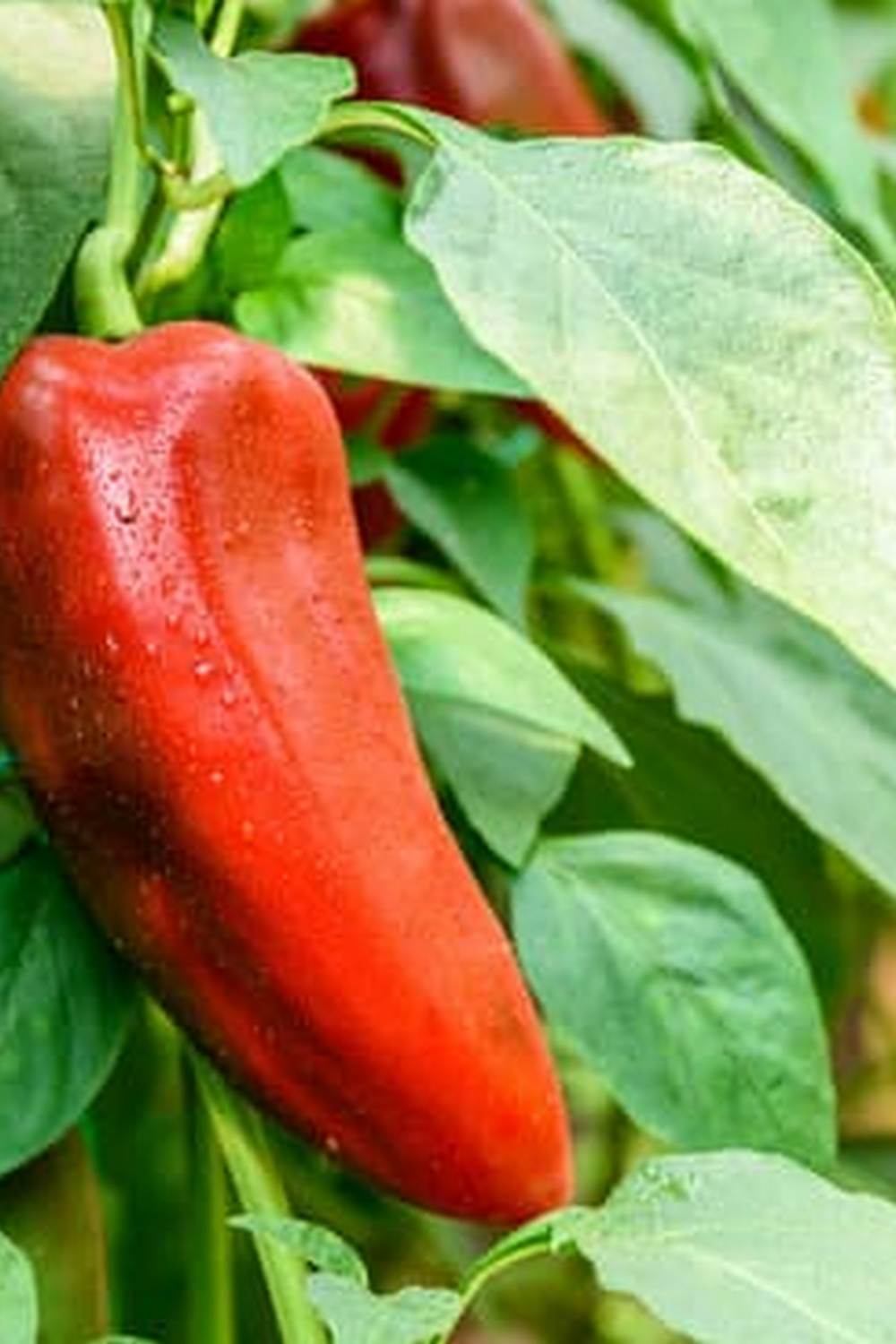Vegetable market gardening, known for its features such as high productivity and efficient space utilization, has gained popularity among both novice and experienced gardeners. This method of growing vegetables involves cultivating produce on a small scale for commercial purposes, often in urban or suburban areas. With the rising interest in sustainable living and locally sourced food, vegetable market gardening offers individuals the opportunity to not only grow their own food but also contribute to their communities.
One of the key aspects of vegetable market gardening is its ability to provide fresh, nutritious produce to local markets and communities. By eliminating the need for long-distance transportation, these gardeners are able to offer consumers fruits and vegetables that are not only flavorful but also environmentally friendly. Additionally, market gardeners have the flexibility to adapt their crops based on seasonal demand, allowing them to cater to the preferences of their customers while maximizing their profits.
Aspiring market gardeners may find it beneficial to learn about the advantages, essential tools and equipment needed, recommended vegetables for cultivation, space optimization techniques, sustainable practices, common pests and diseases to watch out for, success stories from seasoned growers, as well as practical tips for starting their own venture. By understanding these various elements of vegetable market gardening, individuals can better prepare themselves for success in this rewarding and fulfilling endeavor.
Advantages of Vegetable Market Gardening
Increased Profitability
One of the key advantages of vegetable market gardening is the potential for increased profitability. By selling directly to consumers, growers can eliminate the middleman and retain a larger portion of the profits. This direct-to-consumer model allows farmers to set their prices and establish relationships with customers, leading to higher sales margins. Additionally, market gardeners have the flexibility to adjust their crop selection based on consumer demand, further optimizing their revenue streams.
Quality Control
Another significant advantage of vegetable market gardening is the ability to maintain quality control throughout the entire production process. Market gardeners have full control over how their crops are grown, harvested, and handled before reaching customers’ hands.
This level of oversight ensures that produce is fresh, free from harmful chemicals or pesticides, and grown in environmentally friendly ways. As a result, market gardeners can build a reputation for providing high-quality, flavorful fruits and vegetables that keep customers coming back for more.
Community Engagement
Vegetable market gardening fosters greater community engagement by connecting growers directly with consumers. Local markets provide a platform for farmers to interact with their customers, share their farming practices, and educate them about different varieties of vegetables.
This direct interaction creates a sense of trust and transparency between producers and consumers, leading to stronger community ties and support for local agriculture. Additionally, market gardens can serve as gathering places where people come together to purchase fresh produce, socialize, and support small-scale growers in their neighborhoods.
Essential Tools and Equipment for Vegetable Market Gardening
Vegetable market gardening requires certain essential tools and equipment to ensure a successful and efficient operation. One of the most basic tools needed is a set of gardening hand tools such as a trowel, pruning shears, hoe, and hand fork. These tools are essential for planting, weeding, pruning, and maintaining the vegetable garden beds. A quality set of hand tools can make the work easier and more enjoyable for gardeners.
In addition to hand tools, larger equipment such as a wheelbarrow or garden cart is necessary for transporting materials like soil, compost, plants, and harvested vegetables around the garden. A sturdy wheelbarrow can help reduce the strain on a gardener’s back and make it easier to move heavy loads from one place to another.
It is also important to have a reliable watering system in place such as hoses, watering cans, or irrigation systems to ensure that the vegetables are properly hydrated.
Furthermore, protective gear such as gloves, knee pads, and sun hats are essential for ensuring the safety and comfort of vegetable market gardeners while they work. Gardening can be physically demanding at times, so wearing appropriate clothing and gear can help prevent injuries and discomfort. Investing in high-quality tools and equipment is crucial for the success of a vegetable market garden as it allows gardeners to efficiently tend to their crops and maximize their yield.
| Essential Tools | Equipment |
|---|---|
| Gardening Hand Tools | Wheelbarrow or Garden Cart |
| Watering System | Protective Gear (Gloves, Knee Pads) |
Best Vegetables to Grow in a Market Garden Setting
When it comes to choosing which vegetables to grow in a market garden setting, there are several factors to consider. Not all vegetables thrive equally in this type of environment, so it is crucial to select those that are well-suited for the space and conditions available. Below are some of the best vegetables to consider cultivating in your own vegetable market garden:
- Tomatoes: Tomatoes are a popular choice for market gardeners due to their high demand and versatility. They can be grown in various sizes and colors, making them appealing to a wide range of customers.
- Leafy greens: Vegetables such as lettuce, spinach, and kale are great options for market gardens as they are quick-growing and high-yielding. They are also nutritious and popular among health-conscious consumers.
- Root vegetables: Carrots, beets, radishes, and potatoes are excellent choices for market gardens as they have a long shelf life and can withstand different growing conditions.
In addition to these vegetables, herbs like basil, mint, and cilantro also make great additions to any market garden. These herbs not only add flavor to dishes but also have medicinal properties that attract health-conscious buyers. It is essential to research each vegetable’s specific growing requirements before planting them in your garden.
Overall, by selecting a diverse range of vegetables that are suited for your specific location and climate, you can ensure a successful harvest in your vegetable market garden. Consider factors such as customer preferences, growing seasons, and maintenance requirements when deciding which vegetables to grow. With careful planning and attention to detail, you can maximize the potential of your market garden and provide fresh produce for your community.
Maximizing Space in Vegetable Market Gardening
Vertical Gardening
One effective way to maximize space in vegetable market gardening is through vertical gardening. By growing plants upwards instead of outwards, you can make use of vertical structures such as trellises, poles, or fences to grow climbing vegetables like beans, peas, cucumbers, and tomatoes. This not only saves ground space but also allows for better airflow and sunlight exposure, promoting healthier plant growth.
Intensive Planting
Another technique to optimize space in vegetable market gardening is intensive planting. Instead of spacing plants far apart, you can plant them closer together in a systematic manner. This method increases plant density per square foot and maximizes the use of available space while still providing adequate nutrients and water for each plant. Intercropping different types of vegetables with varying heights and root depths can also help utilize space efficiently.
Succession Planting
Succession planting is a strategy where new plants are planted as soon as the previous crop is harvested. This continuous cycle ensures that there is always something growing in your garden throughout the growing season, making the most out of the available time and space. By carefully planning your planting schedule based on crop maturity rates, you can ensure a steady supply of fresh produce from your vegetable market garden all season long.
By implementing these space-maximizing techniques in your vegetable market gardening practices, you can achieve a more productive and bountiful harvest from limited garden space. Whether you have a small backyard garden or a larger plot for commercial production, utilizing these strategies can help you make the most out of every inch of your garden while reaping the benefits of fresh and healthy vegetables grown with care.
Sustainable Practices in Vegetable Market Gardening
In order to maintain a successful vegetable market garden, it is essential to incorporate sustainable practices that not only benefit the environment but also increase the productivity and longevity of the garden. By implementing these practices, growers can reduce waste, conserve resources, and create a more eco-friendly operation. Here are some key sustainable practices to consider:
- Composting: Utilizing compost from kitchen scraps, garden waste, and other organic materials can help enrich the soil and reduce the need for chemical fertilizers.
- Water Conservation: Implementing drip irrigation systems, mulching, and rainwater harvesting techniques can help minimize water usage and promote efficient water distribution throughout the garden.
- Integrated Pest Management (IPM): By using natural predators, trap crops, and crop rotation strategies, growers can control pests without relying on harmful pesticides.
Additionally, practicing crop rotation can help prevent soil depletion and build healthier soil over time. This method involves planting different crops in various locations each season to avoid depleting specific nutrients from the soil. It also helps in pest management by disrupting the life cycles of pests that target specific plants.
Moreover, incorporating cover cropping is another sustainable practice that offers numerous benefits such as weed suppression, erosion control, improved soil structure, and increased biodiversity. Cover crops like legumes can fix nitrogen into the soil naturally, reducing the need for synthetic fertilizers while providing organic matter when they are turned back into the soil. By utilizing these sustainable practices in vegetable market gardening, growers can create a more resilient and environmentally friendly operation that yields healthy produce for their local market.
Common Pests and Diseases in Vegetable Market Gardening
One of the challenges that vegetable market gardeners face is dealing with common pests and diseases that can affect their crops. Some of the most prevalent pests include aphids, caterpillars, and beetles, which can wreak havoc on a garden if not properly managed. Additionally, diseases like powdery mildew, blight, and root rot can also pose a threat to the health of vegetables in a market gardening setting.
To combat these issues, many market gardeners turn to integrated pest management (IPM) strategies. This approach involves using a combination of biological controls, cultural practices, and pesticides as a last resort. For example, introducing beneficial insects like ladybugs or lacewings can help naturally control aphid populations. Crop rotation and proper spacing techniques can also reduce the risk of disease spread among plants.
Another important aspect of managing pests and diseases in vegetable market gardening is early detection. Regularly inspecting plants for signs of infestation or infection can allow gardeners to take action before the problem becomes widespread. By staying vigilant and proactive in their approach to pest and disease management, market gardeners can help ensure a successful harvest year after year.
| Common Pests | Common Diseases |
|---|---|
| Aphids | Powdery Mildew |
| Caterpillars | Blight |
| Beetles | Root Rot |
Success Stories and Case Studies of Vegetable Market Gardeners
One of the most inspiring aspects of vegetable market gardening is hearing about the success stories and case studies of individuals who have found great fulfillment and financial success in this industry. These stories often serve as motivation for aspiring market gardeners, showcasing the endless possibilities that come with dedicated hard work and strategic planning. From small-scale urban gardeners to large commercial operations, there are countless tales of triumph within the realm of vegetable market gardening.
For example, the story of a family-owned market garden in Ontario, Canada, highlights how a passion for sustainable farming practices coupled with efficient marketing strategies can lead to a thriving business. By focusing on growing high-quality organic produce and building strong relationships with local restaurants and farmers’ markets, this family has been able to expand their operation year after year.
Their dedication to providing fresh, nutritious vegetables to their community has not only brought them financial success but also a sense of pride in their contribution to local food systems.
In another case study from Australia, a group of young entrepreneurs transformed an abandoned lot in the heart of Melbourne into a bustling urban farm that supplies fresh produce to nearby cafes and grocery stores. Through innovative vertical gardening techniques and a focus on agroecological principles, they have created a profitable business while also revitalizing an underutilized space in the city.
Their story serves as an inspiration for many urban dwellers looking to reconnect with nature and support local food sources. These success stories illustrate the diverse opportunities and creative solutions within the realm of vegetable market gardening, showing that with passion, perseverance, and knowledge of best practices, anyone can carve out their own niche in this thriving industry.
Tips for Starting Your Own Vegetable Market Garden
Starting your own vegetable market garden can be a fulfilling and profitable endeavor. To ensure success in this venture, there are several key tips to keep in mind. Firstly, it is crucial to carefully plan out your garden layout to maximize space and productivity. Consider factors such as sunlight exposure, water access, and proximity to potential customers.
Secondly, selecting the right vegetables to grow is essential. Choose crops that are in high demand and have a good shelf life to ensure a steady income stream. Additionally, consider planting a variety of vegetables to appeal to a wider customer base.
Investing in quality tools and equipment is another important aspect of starting a vegetable market garden. Tools such as shovels, hoes, watering cans, and pruning shears are essential for maintaining your garden efficiently. Additionally, consider purchasing protective gear such as gloves and knee pads to ensure your safety while working in the garden.
Lastly, it is crucial to stay informed about sustainable practices in vegetable market gardening. Implementing eco-friendly techniques such as composting, crop rotation, and natural pest control methods can help reduce environmental impact and improve the overall health of your garden. By following these tips and staying dedicated to your garden, you can set yourself up for success in the world of vegetable market gardening.
Conclusion
In conclusion, the future of vegetable market gardening appears promising as more individuals recognize the benefits of growing their own produce and supporting local food systems. The features of vegetable market gardening, such as increased access to fresh, healthy produce, reduced carbon footprint from transportation, and support for local economies, continue to attract aspiring gardeners and farmers alike.
With the rising interest in sustainability and self-sufficiency, the popularity of market gardening is expected to grow in the years to come.
As we move forward, it is essential for vegetable market gardeners to embrace sustainable practices to protect the environment and ensure the long-term success of their operations. By implementing techniques such as composting, crop rotation, natural pest control methods, and water conservation strategies, gardeners can reduce their ecological impact while maintaining healthy soil and crops. Additionally, integrating technology and innovation into market gardening practices can help streamline operations and increase productivity.
Overall, the future of vegetable market gardening is bright with opportunities for growth and innovation. By learning from success stories and case studies of experienced market gardeners, incorporating essential tools and equipment into their operations, selecting the best vegetables to grow in a market garden setting, maximizing space effectively, identifying common pests and diseases early on for prevention or treatment – aspiring growers can set themselves up for success.
With dedication, hard work, and a passion for sustainable agriculture, anyone can start their own vegetable market garden and contribute positively to their community’s food system.
Frequently Asked Questions
What Makes Market Gardening Unique?
Market gardening is unique in that it focuses on growing a diverse range of crops on a small scale for direct sale to consumers. This type of farming typically involves intensive cultivation practices to maximize productivity and efficiency.
What Are the Benefits of a Market Garden?
The benefits of a market garden are numerous. Firstly, it allows for direct interaction between the farmer and the consumer, creating a closer relationship and feedback loop. Additionally, market gardening promotes local food production, reduces food miles, and supports sustainable agricultural practices.
What Type of Farming Is Market Gardening?
Market gardening falls under the category of horticulture, specifically focusing on growing fruits, vegetables, herbs, and flowers for sale in local markets or directly to consumers. Unlike large-scale commercial agriculture, market gardening prioritizes quality over quantity and emphasizes sustainable farming methods to produce fresh, high-quality produce.

If you’re looking to get into vegetable gardening, or are just looking for some tips on how to make your current garden better, then you’ve come to the right place! My name is Ethel and I have been gardening for years. In this blog, I’m going to share with you some of my best tips on how to create a successful vegetable garden.





